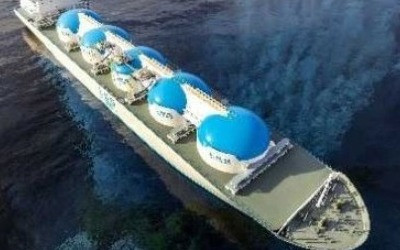June 04, 2020

The Covid-19 pandemic has touched industries all over the world, and the oil and gas sector is not exempt. With supply chains disrupted, contractor movement on hold and delays at every stage of the project pipeline, we’ve seen a considerable change to the way the market is operating worldwide. Within EMEA, the challenges feel particularly pronounced.
Our consultants and contractors are reporting a variety of obstacles, with an uncertain future ahead for much of the industry. Despite this, there are glimmers of hope and long-term opportunities for a market which has always experienced enormous fluctuations. Here’s what oil and gas contractors and other professionals working in the energy sector need to know:
Contractor mobilisation continues to be impacted
The movement of contractors to and from projects is one of the biggest challenges the industry is facing. Without people working on site, projects have ground to a halt. David Fisher, Materials and Logistics Supervisor at Sasol, says travel is “virtually non-existent” within EMEA’s energy sector, with Covid-19 having an enormous impact on projects.
“When you’re looking to mobilise people into a country, you need visas, work permits, passports and medicals, including a whole host of country-specific prerequisites. A lot of these services simply aren’t available currently, which makes it near-impossible to prepare contractors to begin the mobilisation process. Then with the lockdown on international travel – and strict quarantine requirements when entering and exiting certain parts of the world – it becomes extremely difficult to mobilise contractors in any capacity,” David says.
The Middle East continues to face considerable mobility challenges in most countries, even after the easing of lockdown following the end of Ramadan. Airports, local ministries and immigration departments are all closed, resulting in new visa applications being put on hold.
Long-term, we are likely to see changes to the availability of flights and routes, even when borders are opened. Some airlines may not weather the Covid-19 storm, and those that do will likely implement new policies that may impact contractor mobilisation.
The market’s challenging start to the year continues
The start of 2020 was already presenting challenges to the energy market, with weaker economic growth triggering less demand for coal and gas. For a sector that was only just recovering from the 2014-2015 oil price crash, there’s not been a lot to celebrate this year. With April’s dramatic drop in oil prices triggering traders to dump contracts and operators to suspend projects, the supply chain within the energy sector has completely broken down. Equipment is being held in ports or at sea, resulting in incurred storage costs and creating challenges around when and how equipment will be transported to site.
From manufacturing and packaging through to drilling, exploring and selling, there’s disruption at every level until remobilisation can occur. Meanwhile, the reduced oil price has led to small- and mid-sized operators facing challenges to secure investment.
There is still cause for optimism
Despite the challenges the oil and gas market is facing, there are glimmers of hope. For starters, the built-in force majeure clause in contracts means some organisations have been able to maintain low-level exposure in terms of the financial implications of Covid-19. And we’re now seeing positive movements in oil prices, with a barrel of North American crude oil reaching $35.44 on June 1 as lockdown measures relax and people begin to drive again. Meanwhile, Saudi Arabia has announced a reduction in oil production which should lead to an increase in oil prices.
Sasol’s David Fisher is cautiously optimistic, saying more control over Covid-19 may result in oil prices creeping up towards the $50 mark by the end of the year.
“If and when the prices come back up, we will see more jobs. Exploration will continue – there are still oil and gas fields out there that need to be explored, and Africa has huge potential for a strong future in oil and gas. With wells that need drilling and existing fields that can increase their existing production capacity, operators have a real role to play” says David.

How might mobilisation look in a post-pandemic landscape?
If oil prices rebound and projects restart, the oil and gas industry will then face the next hurdle: remobilising the workforce. This will look different in every environment, whether that’s in an office, offshore, onshore, at a refinery or at an LNG terminal, and will be subject to regional variations. We can expect to see new contract rotations, as are being considered on the Canadian East Coast, where there are discussions around extending time on site to avoid frequent quarantining episodes). There will almost certainly be mandatory face coverings in many settings, with Fort Hills announcing such measures on all contractor buses and site shuttles as of early May. Business travel will be heavily restricted, with much stricter regulations on charter air travel and quarantine periods following every trip.
Meanwhile, North Sea workers are being tested as a priority at Aberdeen’s drive-in site. OGUK is supporting the rollout of a protective face covering for workers travelling to offshore installations in the UK Continental Shelf, while BP has introduced a raft of measures including preventative barriers, pre-mobilisation medical screening and safe passage hotel and travel arrangements. We can expect to see more of these measures throughout EMEA as organisations balance the return to site with health and safety.
Visa restrictions will play an ongoing role in mobilisation as governments announce new policies on a regular basis. We may see more examples like Singapore, which has enforced e-health declarations before travellers can go through immigration clearance, or Chile’s ‘release cards’ which declare those recovered from Covid-19 to be exempt from quarantine and restriction.
What are Petroplan’s clients doing to get back to work?
Clients with office-based roles are considering the logistics of a return to the workplace, with one global service company adopting local strategies which include temperature checks before and during office visits. Public transport is presenting additional challenges for offices in central locations where personal transport is not possible, while sickness policies are being updated to factor in quarantine restrictions. We’re seeing office redesigns across clients to adhere to social distancing rules, which will likely lead to reductions in office headcount. Husky is following suit with screening and temperature checks, with Canada’s Husky Energy and the Superior Refinery both introducing temperature checks before site entry, and the latter enforcing mandatory Covid-19 training for all contractors and employees.
Another oil client is planning to introduce a rotational office schedule to group together people who interact most. PPE will be provided and public transport will be actively discouraged, with Cycle to Work schemes introduced. Office cleanliness, socialisation and movement will be overhauled to ensure workers are safe, down to air conditioning filter checks and the prohibition of hot desking. Business meetings will be heavily restricted and office visitors will be given training on hygiene standards, as well as being assigned a host to ensure the office standards are adhered to.
We will see market opportunities in the future
As the industry returns to some level of normality, albeit perhaps a new normality, we will likely see a surge in demand for equipment, services and qualified professionals. This could present supply chain and mobilisation issues for those who are not prepared. A lack of maintenance during the shutdown period may lead to a backlog of tasks at facilities, but again, this will present work opportunities for those in this area. The Internet of Things and Augmented Reality may be used for remote diagnostics and maintenance, which could help to minimise pressure at this time.
As McKinsey states, the oil and gas market should remain highly lucrative for decades, thanks to its highly important role in supplying affordable energy. The petrochemicals and LNG markets are both expected to hold up well despite the pandemic, with gas the fastest growing fossil fuel and continual demand for LNG fuelling the market. Organisations may find opportunities in this crisis to reposition themselves, transform their operating models and look for innovation in what is perhaps the toughest time in the industry’s history to date.
What Petroplan is doing to help
At Petroplan, we know first-hand the impact that Covid-19 has had on mobilisation within the oil and gas industry, and especially the EMEA region. Our teams have worked tirelessly over the past months to support contractors and work closely with clients to ensure safe and efficient mobilisation and de-mobilisation of professionals. Our focus on dedicated personal service has been highlighted as consultants have worked through the night to quickly and efficiently get contractors home, with feedback from contractors acknowledging these efforts:
“I want to thank each one of you for your kindness and attention throughout my time with Petroplan. Although the Mozambique project may have taken a pause for now this is certainly not the end of our roller coaster adventures in the oil and gas industry”
Meanwhile, the commitment of one of Petroplan’s Senior Contracts and Mobilisation Consultant was recognised in a recent client newsletter:
“Additionally we must recognise Morag Williams from Petroplan who worked through Sunday night to secure tickets for all our personnel to make it home before borders shut. Without the early interventions and hard work of the team many of our colleagues would not be safely home with their families during this difficult time.”
Our commitment to mobilisation will only be stronger as projects re-start, and we are already assisting with the remobilisation of contract workforce as clients prepare to return to work in June.
Get in touch
As global recruitment specialists for the oil, gas and energy sector, it’s our business to stay abreast of the latest developments within the global energy market. We’re speaking with organisations, contractors, suppliers and other experts throughout our specialist markets and can therefore offer unique insights on activity within this space. If you’re interested in hearing about project activity, returning to projects and what people are doing during this time, speak to our specialists to find out more.
Find out more about us or visit our news and blog section for more updates on the industry.






You can also use your social account to sign in. First you need to:
To connect your social account you must Acknowledge the Terms & Conditions and Privacy Policy